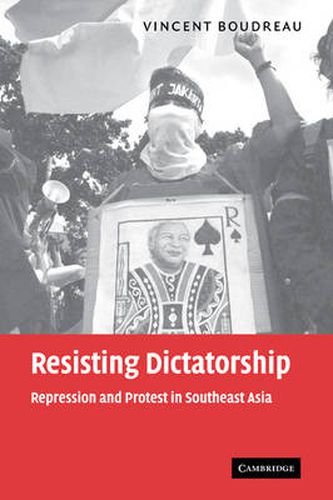Readings Newsletter
Become a Readings Member to make your shopping experience even easier.
Sign in or sign up for free!
You’re not far away from qualifying for FREE standard shipping within Australia
You’ve qualified for FREE standard shipping within Australia
The cart is loading…






Vincent Boudreau’s book compares state repression in three post-war dictatorships under Burma’s Ne Win, Indonesia’s Suharto and the Philippines’ Ferdinand Marcos. In each case the dictator faced distinct social challenges and responded with specifically tailored repressive strategies. These strategies shaped the resources, social bases and opposition cultures available to dissidents and in turn influenced the effectiveness of that opposition. The author balances his first-hand research in the countries in question with the social movements literature to consider the long-term interactions between the regimes and their societies in the wake of repression, and the emergence of the democracy movements which followed. This is a thought-provoking book, which offers a truly comparative study on dictatorship, resistance and democracy in South East Asia. As such, it will be invaluable to students, as well as to those involved in policy making and commentating on the region.
$9.00 standard shipping within Australia
FREE standard shipping within Australia for orders over $100.00
Express & International shipping calculated at checkout
Vincent Boudreau’s book compares state repression in three post-war dictatorships under Burma’s Ne Win, Indonesia’s Suharto and the Philippines’ Ferdinand Marcos. In each case the dictator faced distinct social challenges and responded with specifically tailored repressive strategies. These strategies shaped the resources, social bases and opposition cultures available to dissidents and in turn influenced the effectiveness of that opposition. The author balances his first-hand research in the countries in question with the social movements literature to consider the long-term interactions between the regimes and their societies in the wake of repression, and the emergence of the democracy movements which followed. This is a thought-provoking book, which offers a truly comparative study on dictatorship, resistance and democracy in South East Asia. As such, it will be invaluable to students, as well as to those involved in policy making and commentating on the region.